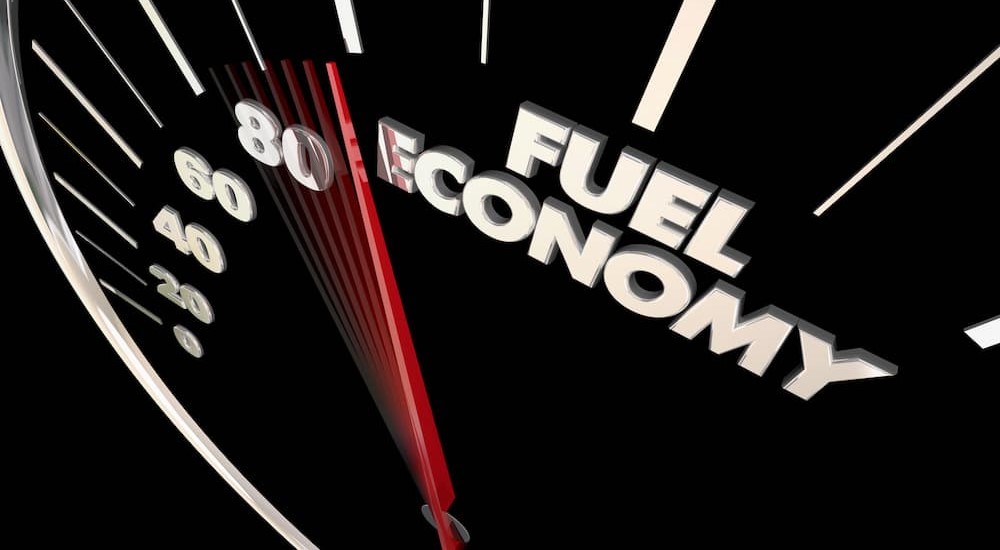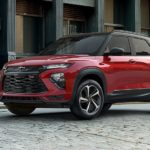It’s not just your imagination—everything is getting more expensive. From grocery store basics like eggs and meat to transportation essentials like fuel and airfare, inflation has hit almost every corner of the market, and the auto industry is no exception. New vehicle prices have actually been on the rise for almost half a decade, but as buyers begin to feel the pinch across the board, higher vehicle prices certainly aren’t welcomed.
While the trend can be illustrated in a number of ways, one statistic might be the most telling: since 2017, the sale of new vehicles priced at less than $25,000 has dipped by 78 percent. This can be partly attributed to the rise of the crossover SUV, which has become the new go-to option for so many drivers who might have once opted for a more affordable sedan.
Automakers are not in the business of ignoring trends and have cut back on lower-cost models over the last five years. Just half a decade ago, the industry was producing 36 models with a sub-$25,000 price tag. Today, that number is down to 10. Budget options like the Chevy Spark and Hyundai Accent have disappeared in recent years, and buyers now have only three cheap subcompact options to choose from in the Kia Rio, Mitsubishi Mirage, and Nissan Versa. So what’s causing this chronic price creep? While it’s tough to know for sure, there are some interesting theories floating around out there. Let’s examine some recent market trends as we try to make sense of the ever-rising vehicle cost.

Bigger, Better Rules the Road
First off, let’s cover what’s NOT impacting rising vehicle costs. A recent Consumer Reports study provides an interesting counterpoint to the theory that the rise in fuel efficiency and safety features has had a major impact on new car prices. Fuel economy is indeed up over the last couple of decades—from 20 to 56 percent in some segments—but prices have actually remained relatively flat since 2003 (as far as individual models are concerned) when one accounts for inflation. This supports the idea that it’s the type of vehicles we’re buying—not the models themselves—that’s accounting for the higher starting price. The rise in fuel efficiency has actually been one of the few financial bright spots for drivers in recent memory, with improved fuel economy saving drivers an average of $7,000 over the life of their vehicles.
The same goes for safety features. Vehicles have certainly become safer with every passing year thanks to industry’s innovation and tightening governmental standards, but there’s been no reflection on the average starting price. Backup cameras have been required on every new vehicle since 2018. The same goes for electronic stability control, which has been a mandated feature since 2011. These safety systems have accounted for a 25 percent reduction in traffic fatalities per 100 million vehicle miles traveled, all without having a noticeable impact on a model’s sticker price.
So who can we blame for the ever-rising prices? The usual culprits certainly play a role: rising inflation, interest rates, and recent supply chain issues are all big factors, as is the disappearance of more affordable options, but some research suggests that buyers’ tastes are also shifting the market in a more expensive direction.
The trend is actually two-fold. Studies show that drivers are both splurging for more luxurious, larger vehicles while also adding more optional features than ever before. As truck-based SUVs continue to gobble up market share, they’re simultaneously getting more expensive, with an average MSRP increase of $8,500 between 2003 and 2019. Amenities also now play more of a role than ever before as every driver seeks to customize a model to fit their own style and needs. According to Edmunds, the gulf between a base model and the well-optioned version that buyers actually leave the dealership in has risen from 24 percent in 2002 to 38 percent in 2022.
An End In Sight?
As automakers struggled to keep factories running and new parts rolling in throughout the pandemic, the industry took it on the chin with US auto sales falling to their lowest point in over a decade. After bottoming out at 13.7 million sales, experts are now predicting something of a bounceback, with expected 2023 sales hovering around 15 million. While that’s still a far cry from the pre-pandemic average of 17 million, it’s promising news for drivers and the auto industry as a whole.
Higher vehicle prices have hampered new vehicle sales in recent months, but they’re not the only factor slowing down the market. A glut of used vehicles also presents a problem. At the height of the pandemic, a supply chain bottleneck led to an explosion in the value of used vehicles. As those used vehicle prices start to come back down to normal, more and more buyers are bypassing new vehicles altogether.
Rising interest rates present another problem for buyers, who are having trouble securing comfortable financing for new vehicles. This issue has been exacerbated as of late, especially amongst drivers who ordered a vehicle before the recent rate hike. While they might have been planning on a 3.5 percent interest rate at the time of purchase, that number has now doubled in some cases.
Luckily there is a light at the end of the tunnel, with some analysts and auto executives predicting that vehicle prices will begin to plateau in 2023 as supply chain-related issues start to resolve. Ford Motor Company has actually forecasted a price drop in the near future, suggesting that their average selling price could fall by as much as five percent in 2023. It’s welcome news for drivers who are tired of paying more for less or those who have had to navigate the historically expensive used vehicle market in the last few years.
Drivers in the market for an EV have also found some relief as of late in the form of an enhanced clean vehicle tax credit program from the federal government. Qualifying plug-in electric and fuel cell vehicles can earn drivers a federal tax credit of $7,500, which can go a long way in helping to defray the cost of a new vehicle. The program has some strict guidelines, including an income cap, and is limited to vehicles produced in the US—but for those who qualify, this can put a new EV well within reach.
With fears of a recession on the horizon, there’s no telling what the future may hold for the auto industry. Vehicle prices have certainly been trending upward in recent years, but whether this is just a temporary, post-pandemic blip on the radar or the new normal is tough to tell. There have certainly been some encouraging signs as of late, including forecasted price drops and the revamped EV tax credit program, but buyers also remain wary of high-interest rates and are increasingly turning to the used market for more affordable options.
One thing is for certain: drivers have certainly developed a taste for having it their way, opting for better-equipped vehicles and driving up the average new vehicle cost in an effort to create their own customized rides. So what’s a driver to do if they’re looking to keep costs down? If you’re a CarLifeNation reader, you already know the value of doing your pre-sale research. Going into the car-buying process with a solid game plan can help drivers avoid this type of amenity-based inflation. Decide what you’re looking for before you set foot in the dealership and you’ll be less likely to add a bunch of spur-of-the-moment features that could see your vehicle balloon well above its starting price.





